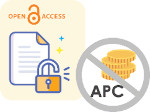Challenges: insights from a health and wellness app
DOI:
https://doi.org/10.61661/congresso.cbmev.7.2024.142Keywords:
healthcare app, health promotion, digital engagement, lifesyle medicineAbstract
Introduction: Health apps encourage healthy behaviors by offering accessible content and online communities. Thematic challenges were created to increase retention (i.e. more active users in the app) and engagement (i.e. interactions). Objective: Evaluate engagement in the health journey and retention of users of a health app who took part in themed challenges. Method: Four 14-day challenges were conducted on the health app, which presented users with content and encouraged actions such as interactions in communities, access to menus, physical exercise and meditation. Descriptive statistics were carried out and hypotheses were tested between the groups. The average number of users enrolled in challenges was 1,403 and around 28,548 users were not enrolled in the same period. Results: All four challenges showed statistically significant higher retention rates compared to users who did not take part in the challenge on the app during the same period. The first challenge implemented, themed around mental health in the workplace, showed the greatest difference in retention (z = 24.27), followed by the last challenge implemented, which aimed to improve self-care skills (z = 22.31). The third challenge to be implemented was related to the theme of the Olympics and showed the third biggest difference between the groups (z = 20.94), followed by the second challenge implemented, which was about getting started in running as a sport (z = 2.86). With regard to the engagement actions, the interactions in the communities showed that the challenge users were more engaged (M = 105.71; SD = 32.7) than those who were not in the challenge (M = 44.16; SD = 16.81). Conclusion: The challenges of this health app proved to be effective in increasing 14-day retention and engagement in interaction actions among users who are on the same health-themed journey when compared to users who did not participate in the challenges.
References
OKAMOTO, Masumi et al. Smartphone-Based Digital Peer Support for a Walking Intervention Among Public Officers in Kanagawa Prefecture: Single-Arm Pre- and Postintervention Evaluation. Graduate School of Health Innovation, Kanagawa University of Human Services, Kawasaki, Japan, 2024. Disponível em: https://pubmed.ncbi.nlm.nih.gov/39316793/ DOI: https://doi.org/10.2196/53759
MAZÉAS, Alexandre et al. The Impact of a Gamified Intervention on Daily Steps in Real-Life Conditions: Retrospective Analysis of 4800 Individuals. Laboratoire Sport et Environnement Social (SENS), Université Grenoble Alpes, Grenoble, France, 2024. Disponível em: https://pubmed.ncbi.nlm.nih.gov/39133533/

Downloads
Published
How to Cite
Issue
Section
License
Copyright (c) 2024 Fernanda Pagotto; Carlos Antunes; Leticia Ramirez, Lívia Barbosa, Lívia Tanizaki, Patricia Caldeira, Alexandre Tarifa, Carolina Pimentel

This work is licensed under a Creative Commons Attribution 4.0 International License.
The VI Brazilian Congress of Lifestyle Medicine allows the author(s) to maintain their copyright without restrictions. Publications are licensed under the Creative Commons Attribution 4.0 International License - CC-BY


